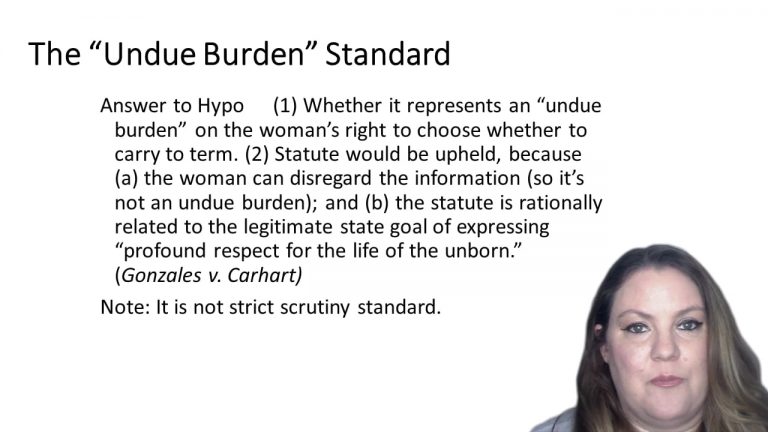SmartBrief
Confirm favorite deletion?
Constitutional Law Keyed to Maggs
Michael H. v. Gerald D.
Citation:
491 U.S. 110 (1989)Facts
Under California law, a child born to a married woman living with her husband is presumed to be a child of the marriage. The presumption of legitimacy may be rebutted only by the husband or wife, and then only in limited circumstances. The California statute that is the subject of this litigation is more than a century old. It provided that the issue of a wife cohabiting with her husband, who is not impotent, is indisputably presumed to be legitimate. In 1980, the legislature amended the statute to provide the husband an opportunity to introduce blood-test evidence in rebuttal of the presumption. In 1981, it amended it to provide the mother such an opportunity.
Only StudyBuddy Pro offers the complete Case Brief Anatomy*
Access the most important case brief elements for optimal case understanding.
*Case Brief Anatomy includes: Brief Prologue, Complete Case Brief, Brief Epilogue
- The Brief Prologue provides necessary case brief introductory information and includes:
Topic:
Identifies the topic of law and where this case fits within your course outline.Parties:
Identifies the cast of characters involved in the case.Procedural Posture & History:
Shares the case history with how lower courts have ruled on the matter.Case Key Terms, Acts, Doctrines, etc.:
A case specific Legal Term Dictionary.Case Doctrines, Acts, Statutes, Amendments and Treatises:
Identifies and Defines Legal Authority used in this case.
- The Case Brief is the complete case summarized and authored in the traditional Law School I.R.A.C. format. The Pro case brief includes:
Brief Facts:
A Synopsis of the Facts of the case.Rule of Law:
Identifies the Legal Principle the Court used in deciding the case.Facts:
What are the factual circumstances that gave rise to the civil or criminal case? What is the relationship of the Parties that are involved in the case.Issue(s):
Lists the Questions of Law that are raised by the Facts of the case.Holding:
Shares the Court's answer to the legal questions raised in the issue.Concurring / Dissenting Opinions:
Includes valuable concurring or dissenting opinions and their key points.Reasoning and Analysis:
Identifies the chain of argument(s) which led the judges to rule as they did.
- The Brief Prologue closes the case brief with important forward-looking discussion and includes:
Policy:
Identifies the Policy if any that has been established by the case.Court Direction:
Shares where the Court went from here for this case.

 4m 27s
4m 27s